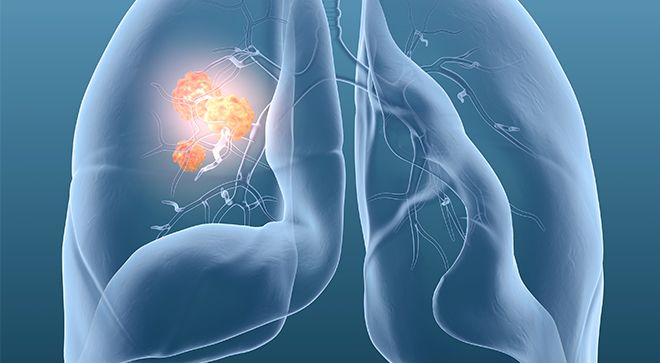News
Article
ROS1-Positive NSCLC Represents a Targetable Mutation for New Therapies
Author(s):
An expert explained what ROS1-positive non-small cell lung cancer is and why it is important to identify mutations like ROS1 through genetic sequencing.
ROS1-positive non-small cell lung cancer, a rare subtype of lung cancer, involves a mutation that therapies — some of which have been recently approved by the Food and Drug Administration — can target and result in potential tumor shrinkage, an expert discussed.
This rare lung cancer subtype constitutes approximately 1% to 2% of patients with non-small cell lung cancer. This cancer is characterized by a genetic event called ROS1 rearrangement or fusion. Interestingly, it tends to occur in patients without a history of smoking, challenging common perceptions of lung cancer. Detection of ROS1 rearrangements requires sequencing, a process examining the tumor's genetics for relevant mutations.
The significance lies in ROS1 rearrangement being a targetable mutation. Drugs have been developed that effectively kill cancer cells and shrink tumors. The approval of specific drugs for this purpose is crucial, as not all patients respond to existing treatments. Developing more effective drugs, especially those penetrating the brain to shrink associated tumors, improves treatment outcomes and minimizes side effects.
CURE® spoke with Dr. Michael Grant, an assistant professor of medicine in the section of medical oncology at Yale School of Medicine in New Haven, Connecticut, to learn more about ROS1-positive non-small cell lung cancer and the importance of identifying that specific genetic mutation.
Transcript:
ROS1 rearranged or ROS1-positive non-small cell lung cancer is a subtype of lung cancer that is — makes up about 1 to 2% of non-small cell lung cancer. And it's a … really interesting subtype, because the cancer is driven by this genetic event, which is the ROS1 rearrangement, or ROS1 fusion, it's also called. And, you know, when — this typically happens in patients that are not — you wouldn't expect to have lung cancer. So people that don't have a history of smoking or have a history of very light smoking, so it doesn't really fit what I think everybody sort of thinks about when they hear about lung cancer.
The thing that's really important, is that you — first is that ROS1 rearrangements or these genetic events are found. So in order to find them in the lung cancer, you have to look for them. And the lung cancer has to be subject to something called sequencing, which is where you look at the genetics of the tumor and you try to find out if there's any mutations or genetic events that could be driving the cancer forward.
And so when ROS1 rearrangements, like I said, 1 to 2% of these tumors may have a ROS1 rearrangement. And the thing that's really important about it is that, you know, this is a targetable mutation. So there are drugs that have been developed, that are extremely, extremely effective at killing the cancer cells, and causing shrinkage of the tumors, and sometimes like, you know, really profound shrinkage.
It's important — this specific approval is extremely important because, you know, despite the fact that there are good drugs to target this disease, you know, not everybody responds to them. The more — the better drugs that we can develop, the more drugs that can get into places like the brain and cause shrinkage of brain tumors that may be related to the lung cancer, you know, the safer the drugs can be, so the better the side effect profile, the better that we can treat the disease.
For more news on cancer updates, research and education, don’t forget to subscribe to CURE®’s newsletters here.

Augtyro ‘Fills a Gap’ in the Treatment of ROS1-Positive NSCLC




